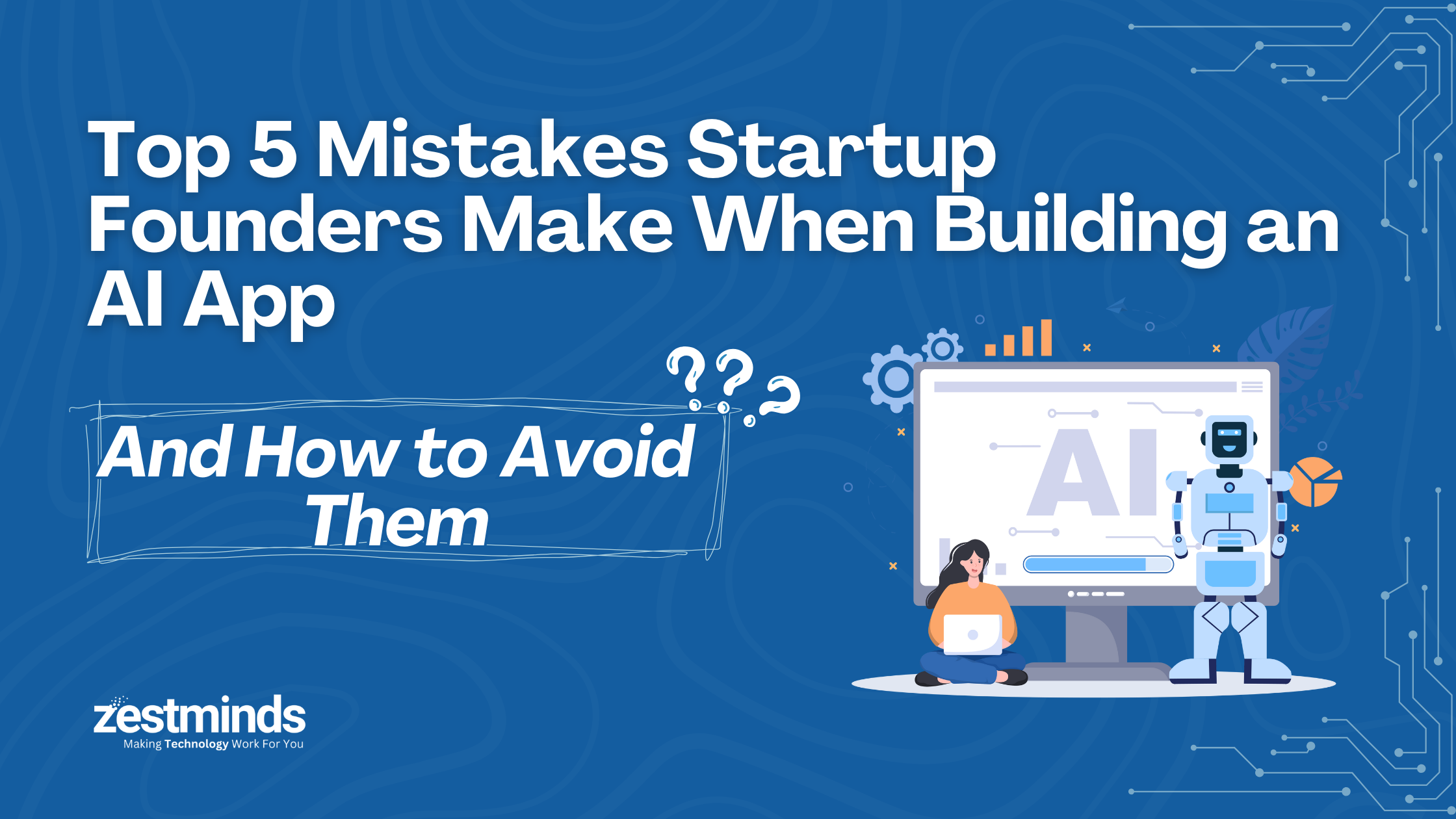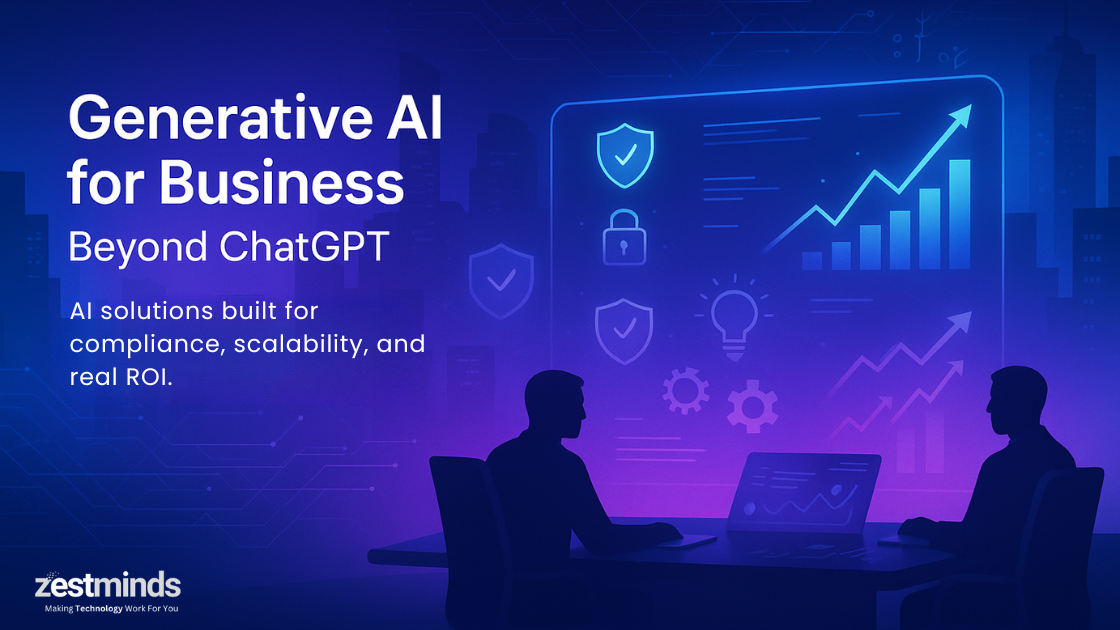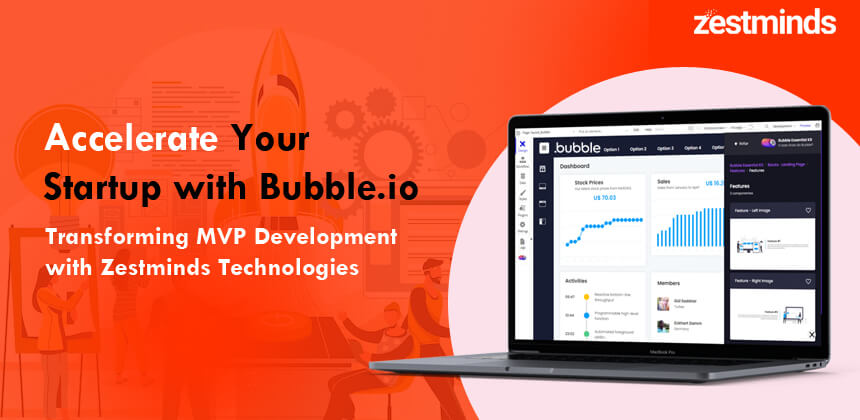AI MVP Cost, Timeline & Tech Stack Guide (Built for Global Startups)
Thinking about building your own AI product but not sure where to start? This guide breaks down everything you need to know to launch a successful AI MVP — from timelines and cost breakdowns to real tech stacks and case studies. Perfect for startup founders and product managers ready to turn ideas into intelligent solutions.
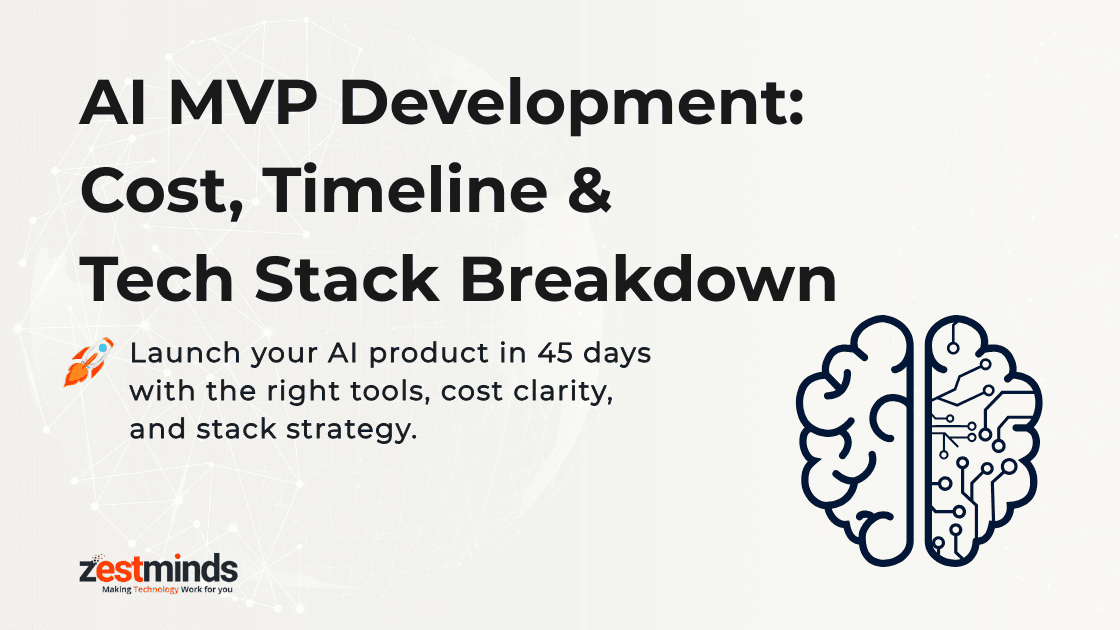
In the world of AI, the difference between idea and impact is speed. As a startup founder or product manager, you’ve probably had that lightbulb moment — the one where you go, "We should build an AI tool that does this."
But here’s the thing: great ideas are everywhere. Execution is what separates a genius pitch from a venture-backed product.
According to the CB Insights AI startup tracker, founders who ship MVPs within 60 days have higher fundraising success due to faster traction and validated demand.
This blog is your field guide to building an AI MVP — fast, lean, and with the right tools. We'll break down everything: timeline, cost, tech stack, and even walk through a real case study.
What Is an AI MVP and Why It Matters Today
Let’s start with the basics.
An AI MVP (Minimum Viable Product) is not a scrappy prototype with a sprinkle of AI on top. It's a functional tool powered by artificial intelligence that solves one real user problem — and does it well enough to get feedback or raise money.
Think of it like building a bicycle with one gear instead of a Tesla. It still gets you from point A to point B. The goal is learning, not luxury.
Why Founders Choose AI MVPs
- Validate a high-risk idea without a massive budget
- Launch early, learn fast
- Get investor-ready with a real, demo-able product
- Let users shape your roadmap with actual usage
Imagine explaining your product at a pitch meeting. Showing a working AI MVP beats talking about wireframes every single time.
AI MVP Development Timeline: From Idea to Launch
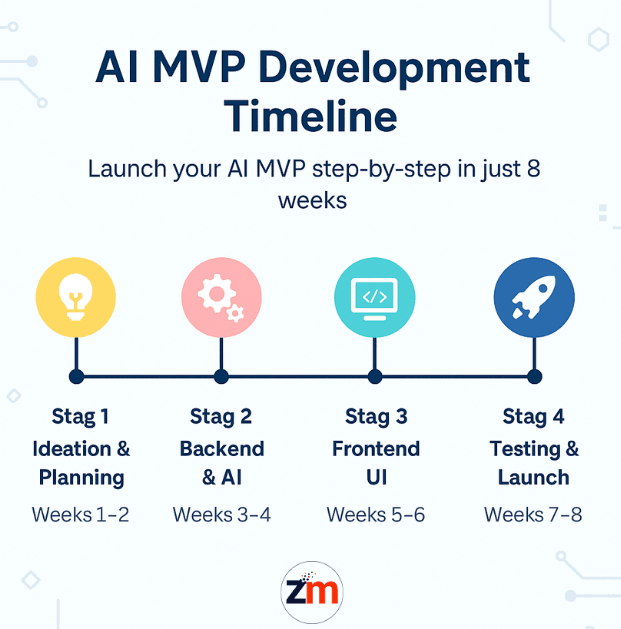
So how long does it take to go from idea to "It’s live!"?
Here’s a founder-friendly 8-week playbook you can adapt to your own runway.
This fast-track 8-week plan has helped startups across regions — from San Francisco to Sydney — validate ideas and launch AI MVPs that actually get used.
Weeks 1–2: Sharpen the Idea
- Map the exact problem you’re solving
- Define ideal user journey (not just screens)
- Identify what AI can actually do in v1
- Choose the right AI model (e.g., GPT-4, Claude, Whisper)
Example: Want to build an AI job coach? Start with one user goal: generate a customized resume based on LinkedIn profile + job description.
Weeks 3–4: Backend + AI Integration
- Build API layer (FastAPI or Node.js work great)
- Connect OpenAI / Claude / Cohere models
- Store user queries & history in a secure DB
- Integrate a vector database like Pinecone or Weaviate
Weeks 5–6: Frontend + User Flow
- Create simple UX (React or Flutter — fast to ship)
- Build onboarding, AI interaction, and results pages
- Use TailwindCSS or Material UI for consistency
Weeks 7–8: Testing + Shipping
- Run user tests with 5–10 early adopters
- Set up analytics and feedback capture
- Go live on Vercel, AWS, or Render
By the end of Week 8, you’ll have a working AI product you can show to users or investors. Nothing fancy. But real.
Cost Breakdown: What Influences AI MVP Pricing
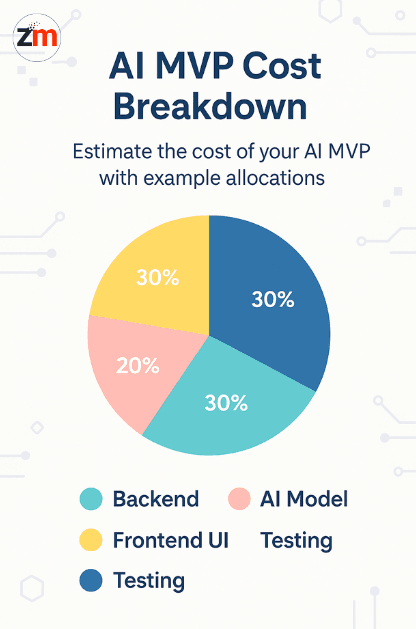
The #1 question we get from founders: "How much will this cost me?"
Short answer: it depends on complexity, but most AI MVPs fall between $10,000 and $35,000.
Cost Components
Whether you're targeting healthcare in the US or building GDPR-compliant platforms in Germany, understanding the cost structure early is critical.
| Area | Estimated Cost |
|---|---|
| Discovery & Strategy | $1,000 – $3,000 |
| UI/UX Design | $1,500 – $5,000 |
| Backend (APIs, DB) | $3,000 – $10,000 |
| AI Integration | $1,000 – $4,000 |
| Frontend (Web/App) | $2,000 – $7,000 |
| Testing & QA | $1,000 – $2,000 |
| Infra + Hosting | $500 – $2,000 |
| Post-launch Support | $1,500 – $4,000 |
Pro tip: Use OpenAI’s pay-per-use API to avoid training costs. You pay cents per 1K tokens — perfect for MVPs.
What drives cost up or down?
- Will the AI give real answers or just scripted ones?
- Is it just a chatbot or a full app?
- Any regulatory compliance (e.g. HIPAA, GDPR)?
- How many user types and flows?
Choosing the Right Tech Stack for AI MVPs
Picking your tech stack is like choosing the car for a road trip. Pick the wrong one, and you’ll break down halfway.
Here’s what we recommend (and use ourselves):
Recommended AI MVP Stack
| Layer | Tools |
|---|---|
| AI Engine | GPT-4, Claude, Cohere, Whisper |
| Backend | FastAPI, Node.js, Django |
| Frontend | React, Next.js, Flutter |
| Auth | Clerk, Auth0, Firebase Auth |
| DB | PostgreSQL, Supabase, Firebase |
| Vector Search | Pinecone, Weaviate, Chroma |
| Deploy | Vercel, AWS EC2, Supabase |
Example: OpenAI platform documentation integration can be done in 10–15 lines of code for rapid prototypes.
Don’t reinvent the wheel. Use hosted services for auth, DB, and AI — so you can focus on value, not plumbing.
Popular Tools & Frameworks to Speed Up Build Time
Here’s your AI MVP "builder’s toolbox." Every founder should bookmark these:
Power Tools
- OpenAI – for LLMs and embeddings
- LangChain – perfect for RAG flows
- Supabase – fast Firebase alternative
- Streamlit – for internal dashboards or quick demos
- Zapier + OpenAI – build AI workflows without code
- Replit + Vercel – dev and deploy in minutes
How We Build GPT Apps Using OpenAI & Pinecone
Case Study: AI MVP in 45 Days (Real Client Story)
Client: A US-based hospital group with 5+ locations
Problem: Staff were overwhelmed with training, SOP documents, and compliance checks. The hospital needed an AI assistant to answer staff queries instantly — but it had to be HIPAA-compliant.
What We Built
- Secure GPT-powered internal assistant
- Role-based login for doctors, admins, and staff
- Encrypted chat logs for audit trails
- Vector database for private hospital docs
Stack We Used
- Backend: FastAPI
- Frontend: React + Tailwind
- AI Engine: OpenAI GPT-4
- Search: Weaviate
- Infra: AWS (S3, Load Balancer, PostgreSQL)
Results in 45 Days
- AI assistant answered 80%+ of staff questions
- Reduced onboarding time by 30%
- Helped leadership maintain HIPAA compliance
- Demo-ready app used in internal funding pitch
Want In? Get Your Region-Ready AI MVP Plan
We've helped teams from North America to Europe design and launch AI MVPs fast. Whether you're in the US, Canada, UK, Australia, or Germany — our blueprint works globally.
- Pre-filled pricing templates
- 8-week MVP roadmap
- Founder's tech stack matrix
Download the Free AI MVP Blueprint PDF
Book a Free Consult — Get a Custom Plan in 30 Mins
Explore AI Development Services
Conclusion: You Don’t Need a Full Product — You Need a Smart One
Startups don’t fail because of bad tech. They fail because they build the wrong thing for too long.
By launching a tight, focused AI MVP — one that users can actually touch — you learn faster, pivot faster, and scale smarter.
Ready to go from idea to impact?
Let’s build something the world wants.
People also ask
1. How much does it cost to build an AI MVP?
The cost of building an AI MVP typically ranges from $10,000 to $35,000, depending on scope, tech stack, and location of your development team.
2. How long does it take to launch an AI MVP?
Most AI MVPs can be designed, built, and launched within 4 to 8 weeks — if you focus on core features and use pre-trained models like GPT-4.
3. Do I need a data science team to build an AI MVP?
Nope! With tools like OpenAI, LangChain, and Supabase, you can build powerful AI products without needing an in-house data science team.
4. What's the difference between a prototype and an AI MVP?
A prototype is a basic demo or wireframe, while an MVP is a working, deployable product that real users can interact with and provide feedback on.
5. What tech stack is best for AI MVP development?
FastAPI or Node.js for backend, React or Flutter for frontend, GPT-4 for AI, and Pinecone or Weaviate for vector search are solid go-to tools.

Shivam Sharma
About the Author
With over 13 years of experience in software development, I am the Founder, Director, and CTO of Zestminds, an IT agency specializing in custom software solutions, AI innovation, and digital transformation. I lead a team of skilled engineers, helping businesses streamline processes, optimize performance, and achieve growth through scalable web and mobile applications, AI integration, and automation.
Stay Ahead with Expert Insights & Trends
Explore industry trends, expert analysis, and actionable strategies to drive success in AI, software development, and digital transformation.
